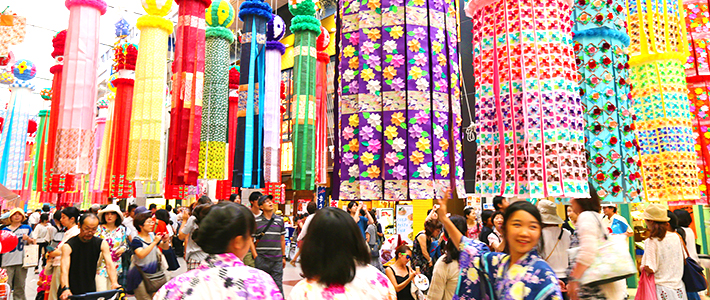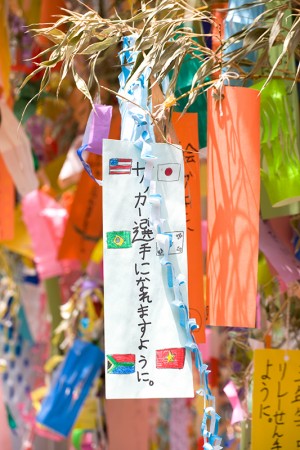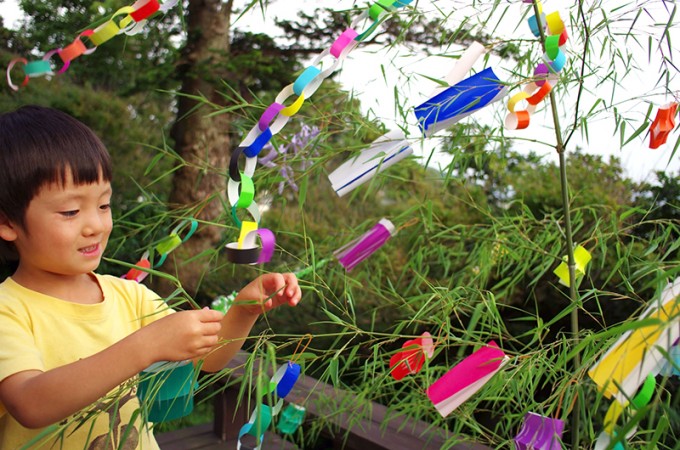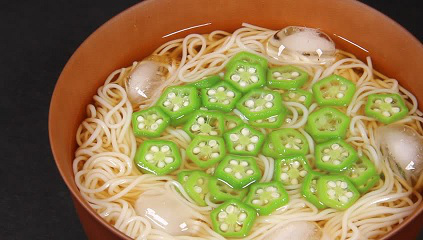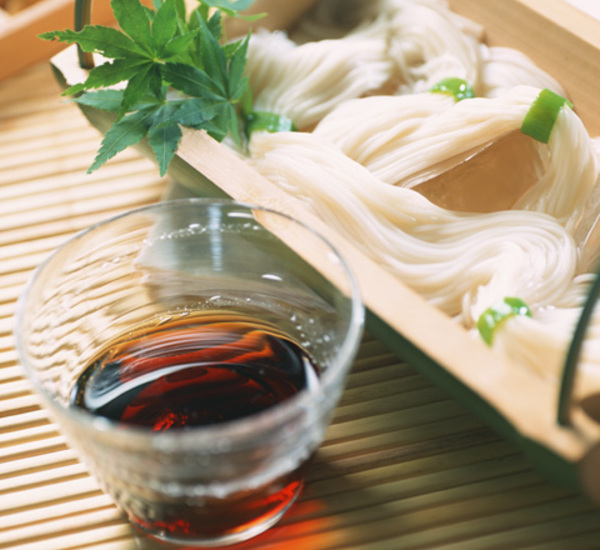Tanabata Star Festival
Tanabata, or the star festival, is on July 7. As the date approaches, long, narrow strips of colorful paper known as tanzaku, vibrant ornaments, and other decorations are hung from bamboo branches, enlivening the decor of homes as well as brightening shopping arcades, train stations, and other public spaces. Before they are hung, tanzaku are inscribed with a wish, such as a child’s dream of becoming a famous soccer player or a parent’s hope for career success.
Bamboo is thought to have become a part of the tanabata tradition for its propensity to grow straight and tall, with upward stretching branches bearing wishes to heaven on the wind.
According to the folktale, Orihime (Vega), a gifted weaver, and Hikoboshi (Altair), a hard-working cow herder, began to neglect their duties upon being wed. The couple incurred the wrath of the bride’s father Tentei, the emperor of heaven, and were exiled to separate ends of the Milky Way. They are granted a meeting each July 7 so long as they both diligently fulfill their celestial obligations during the other days of the year.
The legend behind the star festival first crossed over to Japan from China during the Nara period (710–94) in the form of a weaving festival for young women aspiring to bolster their talents on the loom. The story merged with the Japanese legend of tanabata-tsume, the tale of a celestial maiden who weaves clothes for the gods, as well as other native cultural aspects to produce a unique Chinese-infused Japanese tradition.
The traditional food of the star festival is sōmen. The long, thin noodles evolved from a woven Chinese sweet known in Japanese as sakubei, whose intertwined strands were thought to resemble both the Milky Way and the weaving threads worked by Orihime. Sōmen is commonly enjoyed in a light dipping sauce. Many parents will amuse their children by topping noodles with star-shaped slices of boiled okra.
It’s a day were it’s popular to wear colorful Yukata’s and enjoy the festival.

